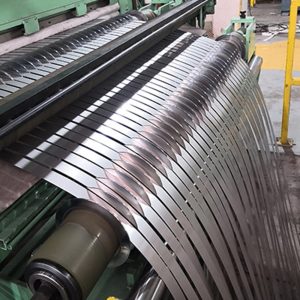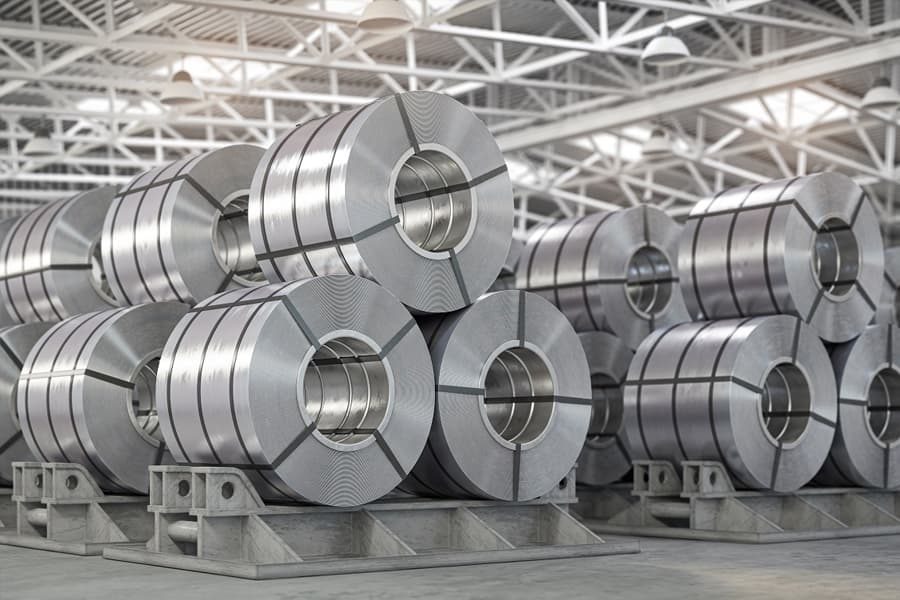When looking at 304 stainless steel vs 316, it is hard to notice the difference between them. However, when manufacturing with 304 vs 316 stainless steel, the difference can be huge. Keep reading to learn more about the two most popular types of stainless steel.
304 vs 316: What Makes Them So Popular?
The high levels of chromium and nickel found in 304 and 316 stainless steel provide them with a strong resistance to heat, abrasion, and corrosion. Not only are they known for their resistance to corrosion, but they are also known for their clean appearance and overall cleanliness.
Both types of stainless steel appear in wide-ranging industries. As the most common grade of stainless steel, 304 is considered the standard “18/8” stainless. 304 stainless steel is widely used because it is durable and easy to form into various forms such as stainless steel sheet, stainless steel plate, stainless steel bar, and stainless steel tube. 316 steel’s resistance to chemicals and marine environments makes it a popular choice among manufacturers.
How Are They Categorized?
The five classes of stainless steel are organized based on their crystalline structure (how their atoms are arranged). Out of the five classes, 304 and 316 stainless steel are in the austenitic grade class. The structure of austenitic grade stainless steels makes them non-magnetic and prevents them from being hardenable by heat treatment.
Properties of 304 Stainless Steel
Chemical Composition
| Cr | Ni | C | Mn | Si | P | S | N | Other |
|---|---|---|---|---|---|---|---|---|
| 18–20 | 8–10.50 | 0.08 | 2 | 0.75 | 0.045 | 0.03 | 0.1 | – |
What are the Physical Properties of 304 SS?
| Physical Property | Melting Point | Density | Thermal Expansion | Modulus of Elasticity | Thermal Conductivity |
|---|---|---|---|---|---|
| Value | 1450℃ | 8.00 g/cm^3 | 17.2 x10^-6/K | 193 GPa | 16.2 W/m.K |
Mechanical Properties of 304 Stainless Steel
| Tensile Strength | Elongation A50 mm | Hardness (Brinell) |
|---|---|---|
| 500-700 Mpa | 45% min | 215 Max HB |
304 Stainless Steel Applications
The medical industry commonly uses 304 SS because it endures powerful cleaning chemicals without corroding. As one of the few alloys that meet the Food and Drug Administration’s sanitary regulations for food preparation, the food industry often uses 304 SS.
- Food preparation: Fryers, food prep tables
- Kitchen equipment: cookware, silverware
- Architectural: siding, elevators, bathroom stalls
- Medical: trays, surgical tools
 Properties of 316 Stainless Steel
Properties of 316 Stainless Steel
Chemical Composition
316 contains many similar chemical and mechanical properties as 304 stainless steel. To the naked eye, the two metals look the same. However, the chemical composition of 316, which is made up of 16% chromium, 10% nickel, and 2% molybdenum, is the main difference between 304 and 316 stainless steel.
Physical Properties of 316 SS
| Melting Point | Density | Modulus of Elasticity | Thermal Expansion | Thermal Conductivity |
|---|---|---|---|---|
| 1400℃ | 8.00 g/cm^3 | 193 GPa | 15.9 x 10^-6 | 16.3 W/m.K |
Mechanical Properties
| Tensile Strength | Elongation A50 mm | Hardness (Brinell) |
|---|---|---|
| 400-620 Mpa | 45% min | 149 max HB |
Applications of 316 Stainless Steel
The addition of Molybdenum in 316 makes it much more corrosion resistant than similar alloys. Due to its superior resistance to corrosion, 316 is one of the staple metals for marine environments. 316 stainless steel is also utilized in hospitals because of its durability and cleanliness.
- Water-handling: boilers, water heaters
- Marine parts- boat rails, wire rope, boat ladders
- Medical Equipment
- Chemical processing equipment
304 vs 316 Stainless Steel: Heat Resistance
Heat resistance is an important factor to consider when comparing the different grades of stainless steel. The melting range of 304 is around 50 to 100 degrees Fahrenheit higher than 316. Although the melting range of 304 is higher than 316, they both have good resistance to oxidization in intermittent service up to 870°C (1500℉) and in continuous service at 925°C (1697℉).
- 304 SS: Handles high heat well, but continuous use at 425-860 °C (797-1580 °F) may cause corrosion.
- 316 SS: Performs best in temperatures above 843 ℃ (1550 ℉) and below 454 ℃ (850°F)
Price Difference of 304 Stainless Steel vs 316
What makes 316 more expensive than 304 stainless steel? The increase of nickel content and the addition of molybdenum in 316 makes it more expensive than 304. On average, the price of 316 stainless steel is 40% higher than the price of 304 SS.
316 vs 304 Stainless Steel: Which is Better?
When comparing 304 stainless steel vs 316, they both have pros and cons to consider when deciding which one to use for different applications. For instance, 316 stainless steel is more resistant than 304 to salt and other corrosives. So, if you are manufacturing a product that will often face exposure to chemicals or a marine environment, 316 is the better choice.
On the other hand, if you are manufacturing a product that does not need strong corrosion resistance, 304 is a practical and economical choice. For many applications, 304 and 316 are actually interchangeable.

